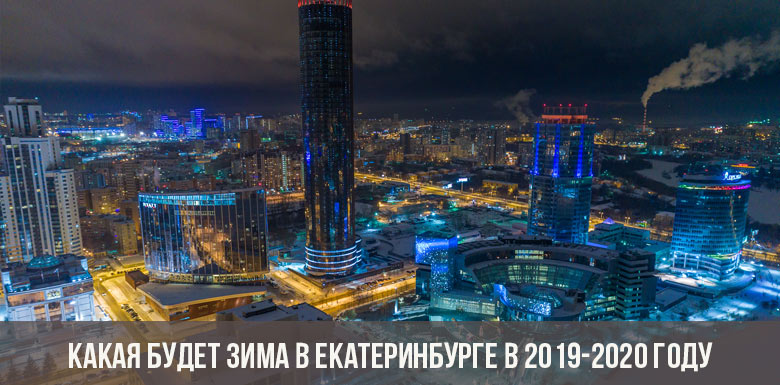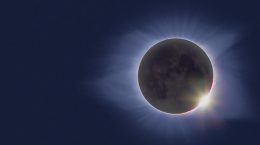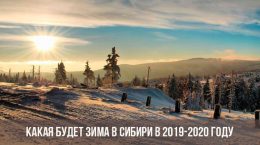Content [Hide]
Winter holidays in Yekaterinburg can be vivid and memorable, but planning a trip ahead of time, you should ask what the upcoming winter of 2019-2020 will be like in the region, when the weather forecast in Ekb promises severe frosts and during what periods nature can spoil the impression of the city by blowing a blizzard or icy rain.
Geography and climatic features of the region
Yekaterinburg (formerly Sverdlovsk) is the main city of the Urals, annually attracting visitors with its theaters, museums, architectural monuments and magnificent nature.
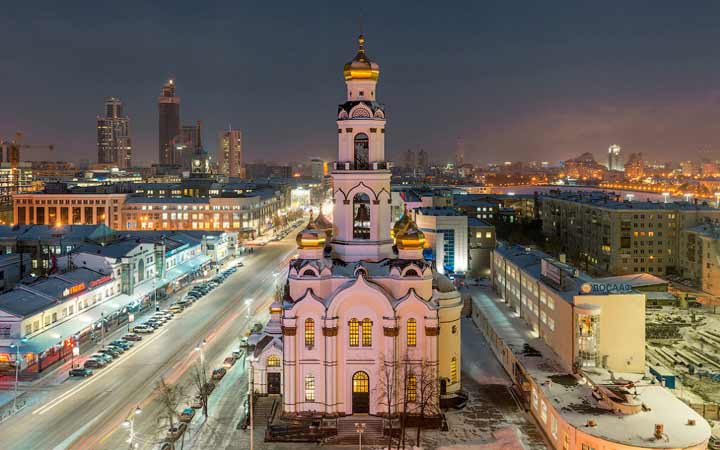
The city is located near the Ural Mountains on the border of temperate and temperate continental climate. For the winter, which in the Sverdlovsk region lasts almost 5 months, the following are characteristic:
- variability of weather conditions;
- sharp jumps in temperature from cracking frosts to plus temperature;
- high rainfall;
- moderate snow cover.
The Ural Mountains influence the formation of climatic features of the region, blocking the path of air masses that move from the central part of Russia. As a result, the weather is formed either by the cold air masses of the Arctic and the West Siberian Plain, or bringing with them the warmth of the wind from Central Asia, and the air masses of the Caspian Sea that promise abundant precipitation.
To predict what the weather may be like in the winter of 2019-2020 in Yekaterinburg, consider the climate chart of the region:

As can be seen from the table, the average temperature of the winter months is in the range from -11 ºС to -13 ºС, although frosts up to -20 ºС are the climatic norm at night.
The absolute minimum temperature recorded in Yekaterinburg is -44.6 ºС, which eloquently speaks of the severity of the climate and prepares guests of the region for possible weather surprises.
Weather forecast
Although it’s still a long way to December, the employees of the Hydrometeorological Center of Russia have already voiced their opinion about the upcoming winter of 2019-2020 in Yekaterinburg and the region.
Residents and guests of the Sverdlovsk region will face a long, frosty and snowy winter. Some sources even say that the coming season will be one of the coldest in recent years.
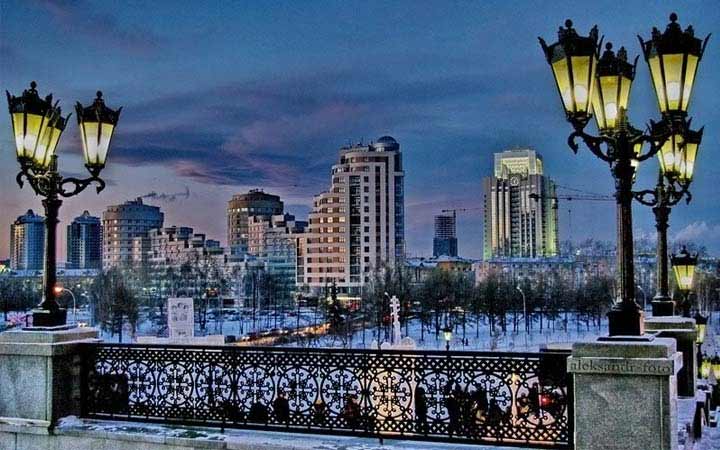
The first cold weather covered the Sverdlovsk region at the end of September. A powerful cyclone brought sharp cooling, night frosts, wet snow and gusts of wind up to 15-18 m / s in this part of the Urals.
Although meteorologists promise Yekaterinburg a fairly cold winter, they record an increase in average annual temperature in this region. Climate change is due to global warming. But, as you know, such changes often lead to even greater instability of the temperature regime and warming can be replaced by periods of extreme temperature decrease.
Monthly Long-Range Forecast
You can also find out what surprises the weather is preparing in the coming months by analyzing the long-term weather forecast for the Sverdlovsk region.
Since such meteorological forecasts are based on an analysis of data from previous years, they do not always come true. But, in many ways, such a calendar can tell what can be expected from the weather in a given month.
December 2019
Since stable snow cover in this corner of the Urals is formed long before the start of the calendar winter, December will not bring very noticeable changes in the temperature regime.Heavy frosts will be added to the frosts, which will begin in the second half of November. But the temperature regime in early December will be quite mild - during the day the temperature will approach zero, and at night it will drop, but not lower than -9 ºС.
A sharp decrease in temperature is expected only in the second half of the month. night frosts reached -18 ºС, and during the day the thermometer will only rise to -13 ºС.
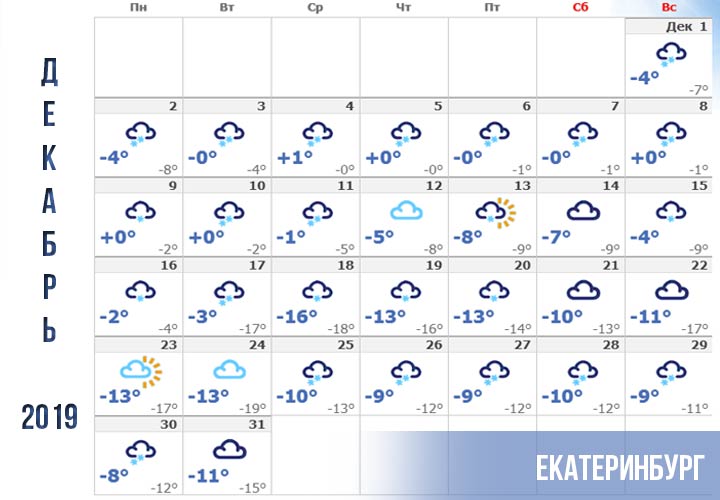
The whole month the sky will be cloudy. New Year's Eve will be cold (-15 ºС), but without precipitation.
January 2020
Mild and relatively warm weather, which will last on January 1-2, will be replaced by a sharp cooling. By Christmas, the night temperature in Yekaterinburg will drop below -20 ºС.
The January thaw, which will follow a short frosty period, will give a break only for a few days, after which the temperature will make another bend and drop to -25 ºС during the day and -32 ºС at night.
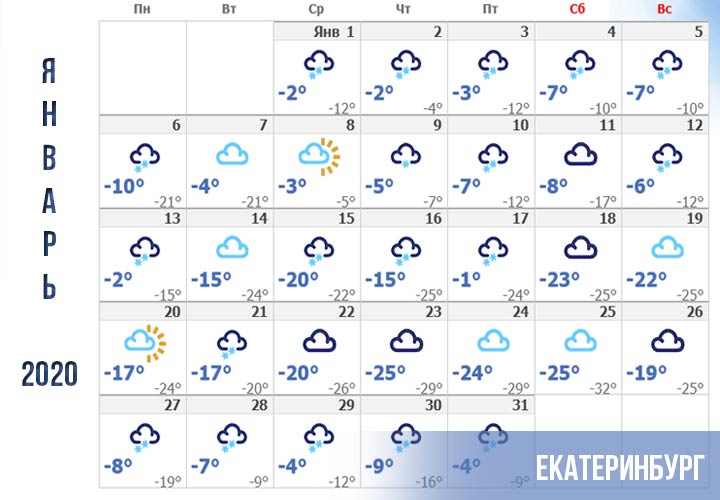
February 2020
Although January is traditionally considered the coldest winter month in the Sverdlovsk Region, the second month of 2020 will not allow the region's inhabitants to relax. The temperature swing will swing with incredible amplitude, then dropping to -26 ºС and even -32 ºС, then rising to zero. Such sharp jumps can be felt especially acutely by people suffering from weather dependence, as well as guests from the southern regions who are not used to such extreme weather conditions.
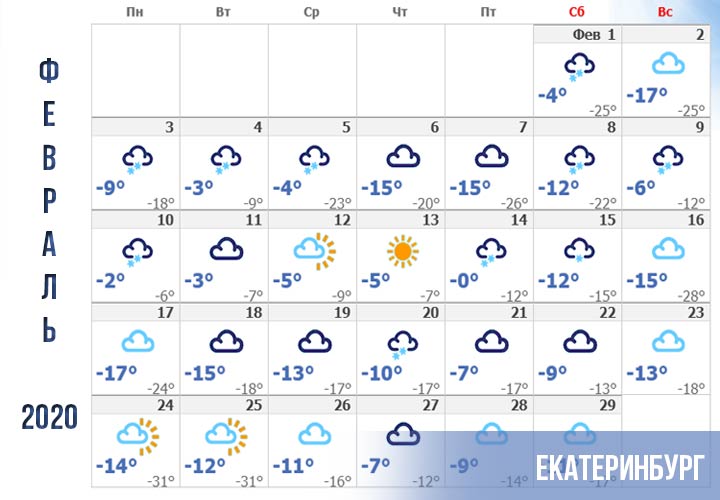
Frosts will not recede also in March. The positive temperature in the daytime will delight residents of Yekaterinburg only in the last week of the first spring month. Although, even in April there will still be frosty periods, which will increasingly be replaced by thaws.
Omens
If you believe the popular signs that recommend building your own weather forecast, what the winter of 2019-2020 will look like according to the weather for the Nativity of the Virgin (September 21-22), then in Yekaterinburg in winter you should expect a lot of rainfall and moderate frosts.
You can also understand what winter will be in 2019-2020 by observing plants and animals in Yekaterinburg. About the coming harsh winter they say:
- frequent fogs in August;
- thick shells on acorns;
- unusually large bumps;
- especially bright foliage on trees;
- plentiful harvest of mountain ash and mushrooms;
- highly equipped nests of wild bees;
- early migration of migratory birds;
- very dense undercoat (it is necessary to look at wild or animals living on the street)
If you live in Yekaterinburg or the Sverdlovsk region, we suggest sharing your observations in the comments. Let's check if folk signs work and whether meteorologists make mistakes in their long-term forecasts regarding what the upcoming winter of 2019-2020 will be in Yekaterinburg.
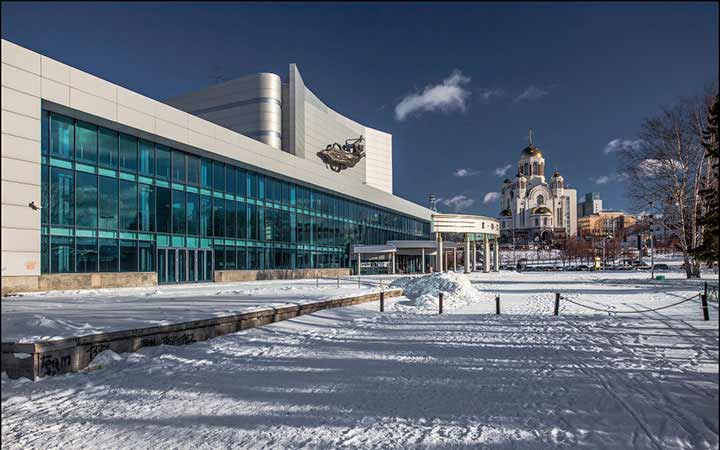
Read also:

